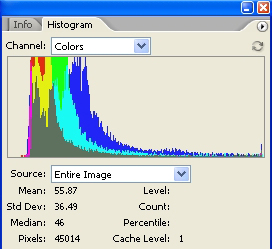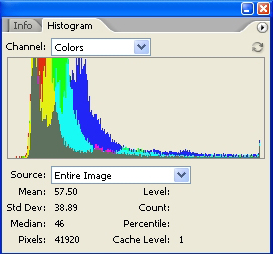SBIG ST-2000XCM color camera vs. the ST-2000XM mono w/filters
Reflection Nebula Comparison
M45 Merope Comparison
This test compares the two cameras performance in recording reflection nebulas. Below are crops of Merope Nebula located in M45 Pleiades enlarged to 200X. These are a combination of short 3 minute sub-frames so as not to over saturate the image due to the extremely bright stars.
Using Images Plus the only processing was calibration and DDP using a portion of the nebula for reference to bring both examples to an approximate stretched level and a G2 star weight applied to the XM version during RGB combine.
• The XM version shows more correct blue hues and much cleaner star edges.
• The XCM blue shift is due to the differences in the spectral curve of the blue Bayer filters but can be easily adjusted during processing.
No big deal though as other astronomical filters sets can also have a shift due to different curves.
• The XCM displays slightly more background noise that can be cleaned.
• The XCM shows star edge color artifacts on the smaller stars that will require additional processing to reduce their presence.
• The XCM displays a less harsh halo around Merope when compared to the XM version that used filters which I prefer aesthetically.
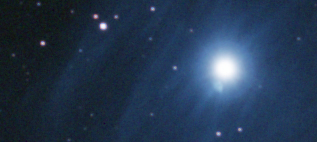
|
200X Crop of Merope taken with the XCM ST2000-XCM data details:
|
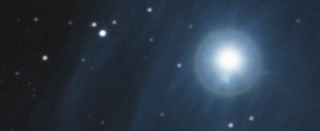
|
200X Crop of Merope taken with the XM ST2000-XCM data details:
|
Merope After Processing
The following XCM example of Merope after applying Adobe CS noise reduction, color balance and using a star mask and selective color tool to reduce the star edge color artifacts. This isn't a finished image but just a demonstration that differences in this type of object between the XCM and XM can be adjusted.
Unlike DSO objects such as M1 Crab Nebula that contain fine details that can test the XCM's performance limitations, reflection and emission nebula performance can be on level grounds as the XM camera when processed correctly.
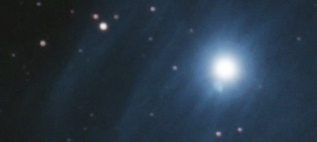
|
200X Crop of Merope taken with the XCM after noise reduction, star edge artifact cleanup and
levels adjustment. This example is close to the quality of the XM image. Differences will be less noticeable at the native image scale.
|

|
200X Crop of Merope taken with the XM
|
Noise Reduction Measurements
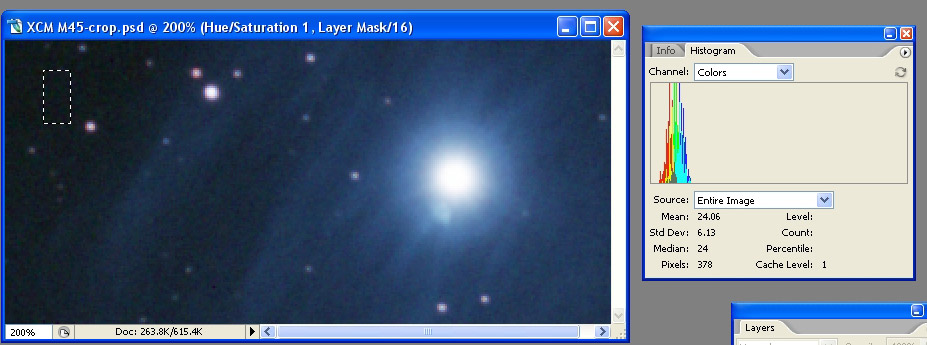
|
| XCM version before noise processing. Note the high Std. Deviation value. |
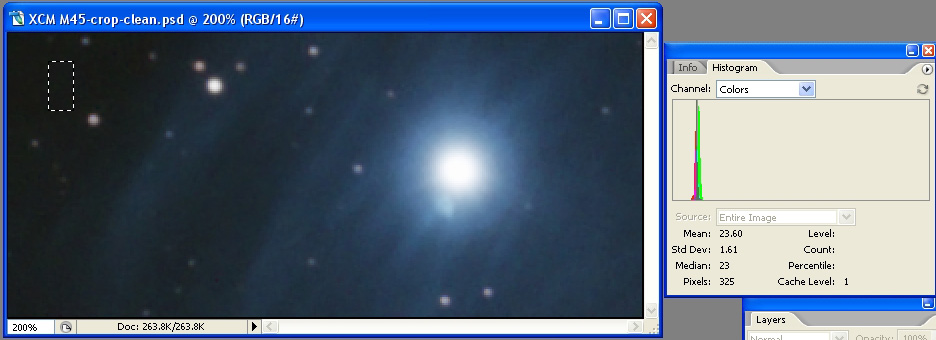
|
| XCM version after noise processing. Note lower Std. Deviation |
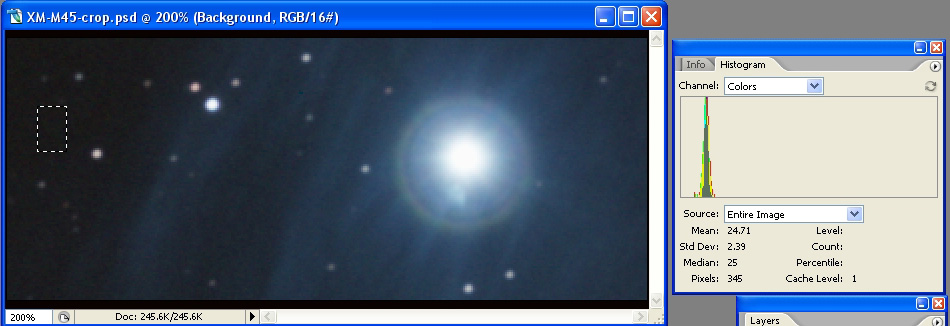
|
| XM version with no noise processing. |
|
Reflection Nebula Performance Summary This test shows the similarity in colors and structural details between the XM and XCM cameras for reflection nebulas. Even though the total exposure times were the same, the XCM showed more noise. One reason is the lower QE of the Bayer sensor and the short sub-exposures. Additional processing time will be needed for reducing noise levels, star artifacts and color balance to match that of the XM version. For this test short 3 minute sub-exposures were used. In actuality I would also take another set of longer sub-exposures to record the fainter portions of M45 and use methods similar to that of processing M43 Orion Nebula to combine the two due to the large difference in dynamic range between the bright stars and the fainter outer structure. Short sub-exposures for many cameras will shows their noise characteristics more which is why it's important to find the optimum exposure times for your camera/OTA combination. |
